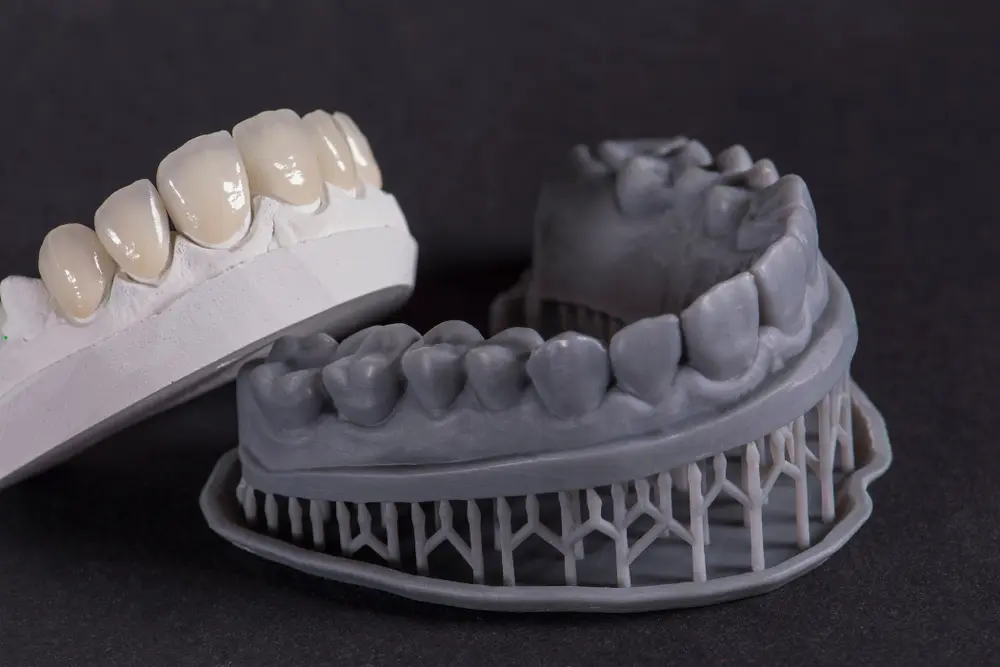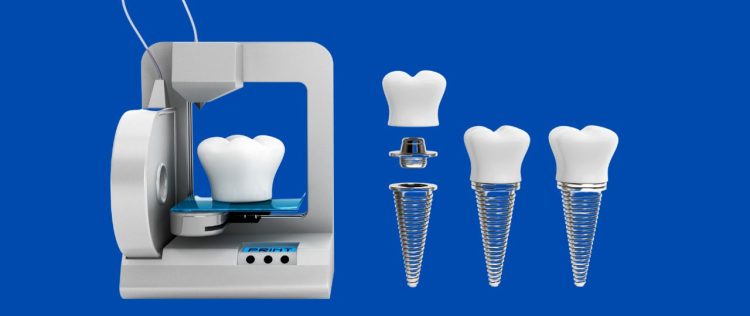In recent years, the integration of 3D printing technology into dentistry has been nothing short of revolutionary. From crowns and bridges to dentures and even orthodontic aligners, 3D printing is transforming the way dental professionals design, create, and place dental restorations. This cutting-edge technology promises a more efficient, precise, and personalized approach to dental care. In this article, we will delve into how 3D printing is being used in modern dentistry, the advantages it offers over traditional methods, and what the future holds for this technology in creating customized dental solutions for patients.
What Is 3D Printing in Dentistry?
3D printing, also known as additive manufacturing, is the process of creating a three-dimensional object from a digital model by adding material layer by layer. In dentistry, 3D printing is used to create various dental appliances, including crowns, bridges, dentures, orthodontic aligners, and even surgical guides. The process begins with creating a digital impression of a patient’s teeth using specialized equipment, such as intraoral scanners. This digital impression is then used to generate a 3D model, which can be sent to a 3D printer to create the final dental restoration.
The beauty of 3D printing in dentistry is its ability to produce highly accurate and customized dental appliances quickly and with a level of precision that was previously unattainable using traditional manufacturing methods. Unlike conventional methods that rely on molds, casting, and labor-intensive procedures, 3D printing allows for faster production and fewer errors, ultimately leading to better outcomes for patients.
How Is 3D Printing Used in Modern Dentistry?
3D printing is currently being used in various aspects of modern dentistry. Below are some of the key applications:
1. Dental Crowns and Bridges
Traditionally, creating dental crowns and bridges involved taking molds of the patient’s teeth, sending the mold to a dental lab, and waiting several days or even weeks for the restoration to be made. With 3D printing, the process is significantly faster. Using the digital impression from the patient, a 3D printer can create the crown or bridge in a matter of hours, ensuring a precise fit. The restoration is then placed directly into the patient’s mouth with minimal adjustments.
One of the biggest advantages of 3D printing for crowns and bridges is the ability to create highly detailed, customized restorations that fit perfectly with the patient’s natural teeth. Traditional methods often involve slight imperfections due to the limitations of molds, but 3D printing allows for greater accuracy, resulting in a better fit and a more comfortable final restoration.
2. Dental Implants and Surgical Guides
For dental implants, precision is paramount. The planning process for dental implant placement can be significantly enhanced with 3D printing. Surgeons can use 3D-printed surgical guides that are based on a digital model of the patient’s mouth. These guides help ensure that implants are placed in the exact location with maximum precision, reducing the chances of complications and improving the overall success rate of the procedure.
Moreover, 3D printing allows for the creation of dental implants that are more personalized and tailored to each patient’s needs. Traditional implants may not always fit perfectly due to variations in anatomy, but 3D printing can account for these variations, resulting in a better outcome.
3. Dentures
Dentures are another area where 3D printing is having a profound impact. Traditionally, creating dentures required multiple visits to the dentist, as well as the creation of molds and adjustments over time. With 3D printing, however, dentures can be designed and produced quickly, reducing the number of visits needed and improving patient comfort.
Additionally, 3D printing allows for the production of dentures that are lighter, more comfortable, and more natural-looking. By using high-quality materials, dentists can create dentures that closely resemble natural teeth in both appearance and function. 3D printing also allows for greater precision in the fit of the dentures, ensuring they sit more comfortably in the patient’s mouth and reduce the risk of irritation or slippage.
4. Orthodontic Aligners
In the realm of orthodontics, 3D printing has revolutionized the production of clear aligners, such as those made by Invisalign. Traditionally, creating aligners involved taking impressions and sending them to a lab, where the aligners were created and shipped back to the dentist. With 3D printing, the process is much faster and more efficient.
Using digital impressions of the patient’s teeth, orthodontists can create a series of aligners that gradually shift the teeth into their desired positions. 3D printing allows for precise control over the alignment process, resulting in better-fitting aligners and more predictable treatment outcomes. Additionally, because the aligners are custom-made for each patient, the comfort and effectiveness of the treatment are significantly improved.
Advantages of 3D Printing in Dentistry
The integration of 3D printing into dental practices offers numerous advantages over traditional methods. Below are some of the key benefits:
1. Speed and Efficiency
One of the most significant advantages of 3D printing in dentistry is the speed at which restorations can be created. Traditional methods of creating dental crowns, bridges, and dentures can take several days or even weeks, which can be inconvenient for patients. With 3D printing, these restorations can often be produced in a matter of hours, allowing for faster treatment and reduced wait times.
In addition, 3D printing eliminates the need for multiple appointments for mold-taking and adjustments, making the overall process more efficient and convenient for both the dentist and the patient.

2. Accuracy and Precision
3D printing offers an unparalleled level of precision and accuracy. Digital impressions of a patient’s mouth are incredibly detailed and allow for restorations to be created with a high degree of accuracy. This precision minimizes the chances of errors during the manufacturing process, resulting in better-fitting dental appliances that require fewer adjustments.
Moreover, 3D printing allows for the creation of restorations that are tailored specifically to the individual patient, improving comfort and functionality. For example, in the case of dental implants, 3D-printed surgical guides can ensure that the implants are placed exactly where they are needed, minimizing the risk of complications.
3. Customization
Customization is another major advantage of 3D printing. Traditional dental methods often rely on standardized molds and templates, which may not always provide the best fit for every patient. With 3D printing, every dental restoration can be customized to fit the unique shape and structure of a patient’s mouth, leading to a more natural and comfortable result.
This is especially beneficial for complex procedures such as dental implants, where precise alignment is crucial. By creating personalized surgical guides and implants, 3D printing enhances the overall success rate of these procedures.
4. Cost-Effectiveness
While the initial investment in 3D printing technology can be significant, over time, the cost savings are substantial. Traditional methods often involve outsourcing the creation of dental restorations to external labs, which can be costly and time-consuming. With 3D printing, dental practices can create restorations in-house, reducing the need for external lab fees and speeding up the turnaround time.
Moreover, 3D printing reduces the chances of errors during the manufacturing process, minimizing the need for costly remakes and adjustments. This efficiency can ultimately result in cost savings for both the dental practice and the patient.
5. Improved Patient Experience
Finally, 3D printing improves the overall patient experience. By reducing the number of appointments required, speeding up the production of dental restorations, and ensuring a better fit, patients benefit from more efficient and comfortable dental care. Additionally, the ability to produce high-quality, customized restorations that look and feel more natural enhances patient satisfaction and outcomes.
The Future of 3D Printing in Dentistry
The future of 3D printing in dentistry is incredibly promising, with new developments and advancements on the horizon. Here are some ways 3D printing could shape the future of dentistry:
1. Bioprinting and Tissue Regeneration
One of the most exciting areas of development in 3D printing is bioprinting, the process of printing living cells to create tissue and organs. In the future, it may be possible to use 3D printing to create not only dental restorations but also new tissue for regenerating damaged teeth or gums. This could pave the way for groundbreaking advancements in regenerative dentistry, offering patients new solutions for tooth loss or damage.
2. Personalized Treatment Plans
As 3D printing technology becomes more advanced, it will allow for even more personalized treatment plans. Dentists will be able to create even more precise digital models of their patients’ mouths, allowing for highly individualized restorations and treatments. This level of customization could lead to even better outcomes for patients and faster recovery times.
3. Improved Materials
The materials used in 3D printing are constantly evolving, and in the future, we can expect to see even stronger, more durable, and more biocompatible materials for dental restorations. These advancements will improve the longevity and effectiveness of 3D-printed dental appliances, making them an even more attractive option for patients.
Conclusion
3D printing has already revolutionized dentistry in many ways, offering significant advantages in terms of speed, accuracy, customization, and cost-effectiveness. As the technology continues to evolve, we can expect even greater innovations in the field, from personalized dental solutions to bioprinting and tissue regeneration. The future of dentistry is undoubtedly bright, and 3D printing is at the forefront of this transformation. As patients continue to seek more efficient, affordable, and effective dental care, 3D printing will play an increasingly central role in helping them achieve the smiles they desire.













































Discussion about this post